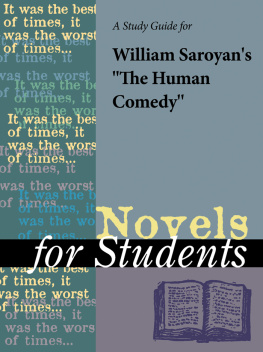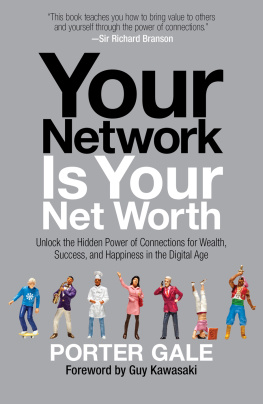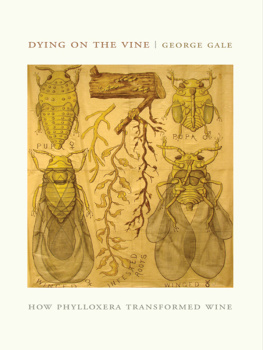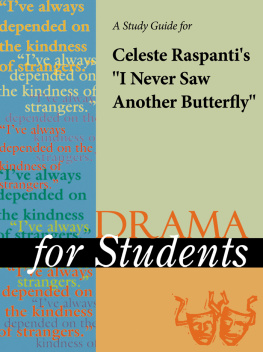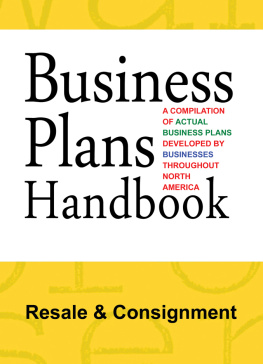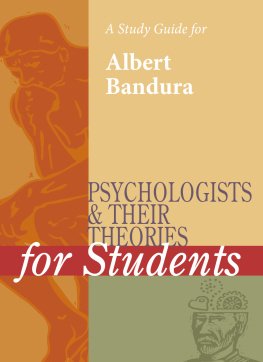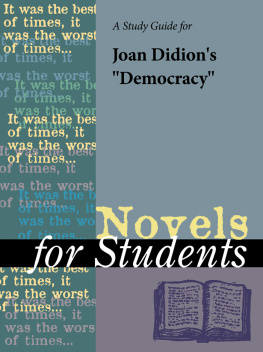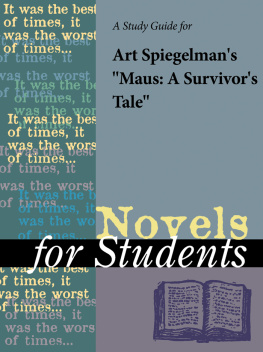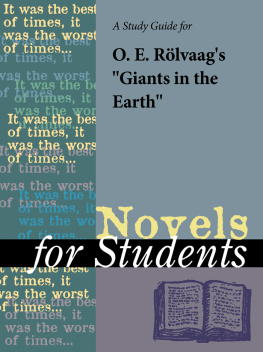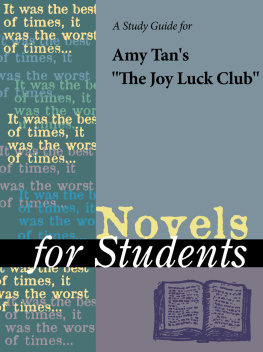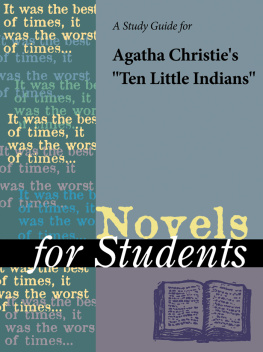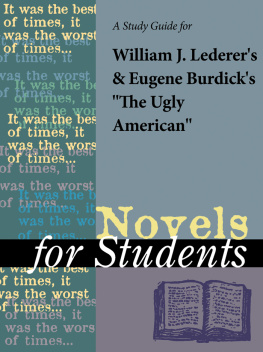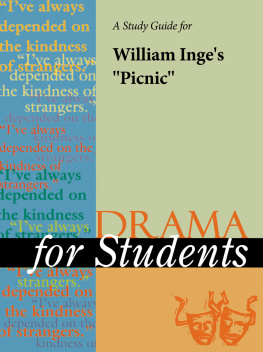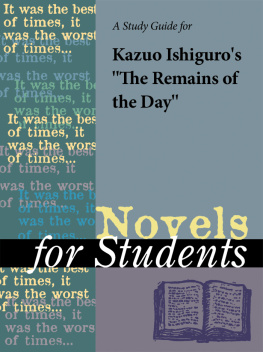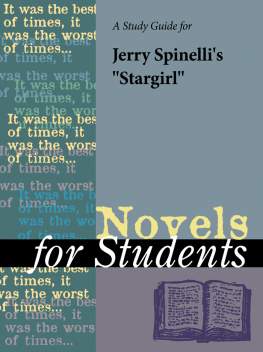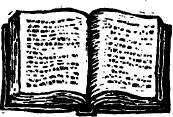TABLE OF CONTENTS
Guide
Novels for Students, Volume 39
Project Editor: Sara Constantakis
Rights Acquisition and Management: Margaret Chamberlain-Gaston, Jacqueline Flowers
Composition: Evi Abou-El-Seoud
Manufacturing: Rhonda Dover
Imaging: John Watkins
Product Design: Pamela A. E. Galbreath, Jennifer Wahi
Content Conversion: Katrina Coach
Product Manager: Meggin Condino
2012 Gale, Cengage Learning
ALL RIGHTS RESERVED. No part of this work covered by the copyright herein may be reproduced, transmitted, stored, or used in any form or by any means graphic, electronic, or mechanical, including but not limited to photocopying, recording, scanning, digitizing, taping, Web distribution, information networks, or information storage and retrieval systems, except as permitted under Section 107 or 108 of the 1976 United States Copyright Act, without the prior written permission of the publisher.
Since this page cannot legibly accommodate all copyright notices, the acknowledgments constitute an extension of the copyright notice.
For product information and technology assistance, contact us at Gale Customer Support, 1-800-877-4253.
For permission to use material from this text or product, submit all requests online at www.cengage.com/permissions.
Further permissions questions can be emailed to permissionrequest@cengage.com
While every effort has been made to ensure the reliability of the information presented in this publication, Gale, a part of Cengage Learning, does not guarantee the accuracy of the data contained herein. Gale accepts no payment for listing; and inclusion in the publication of any organization, agency, institution, publication, service, or individual does not imply endorsement of the editors or publisher. Errors brought to the attention of the publisher and verified to the satisfaction of the publisher will be corrected in future editions.
Gale
27500 Drake Rd.
Farmington Hills, MI, 48331-3535
ISBN-13: 978-1-4144-6702-3
ISBN-10: 1-4144-6702-8
ISSN 1094-3552
This title is also available as an e-book.
ISBN-13: 978-1-4144-7368-0
ISBN-10: 1-4144-7368-0
Contact your Gale, a part of Cengage Learning sales representative for ordering information.
Printed in Mexico
1 2 3 4 5 6 7 16 15 14 13 12
The Human Comedy
William Saroyan
1943
Introduction
William Saroyan is best remembered for his 1943 war novel, The Human Comedy, a coming-of-age story featuring Homer Macauley, a boy who delivers telegrams to help support his family during World War II while his older brother is overseas serving in the military. The mythical setting of Ithaca, California, is modeled after Saroyan's hometown of Fresno, where he grew up in an Armenian community. The story has been criticized as overly sentimental but has remained popular because it affirms life and the American spirit. Such affirmations were appreciated during the Great Depression and World War II, when he was most popular.
Saroyan wrote novels, short stories, plays, screenplays, and plays for television in a lyrical and allegorical style. The Human Comedy has been made into a Hollywood film and a Broad-way musical. His well-known play The Time of Your Life won a Pulitzer Prize in 1940. Interest in his work declined after World War II, although he continued to write prolifically until his death in 1981.
Author Biography
Saroyan was born on August 31, 1908, in Fresno, California, to Armenak and Takoohi Saroyan, Armenian immigrants from Bitlis. Armenak, an ordained minister, was forced to become a California chicken farmer to support the family and died prematurely when William was three. Takoohi had to put her four children into an orphanage in Oakland. William's five years in an orphanage forever stamped his character. The family was reunited in Fresno in the Armenian community, with Takoohi working in a cannery and little William selling newspapers and later delivering telegrams. He was a voracious reader but left high school before graduation. After his mother showed him his father's writings, William decided to become a writer and published his first stories, based on his experience among the Armenian American fruit growers of the San Joaquin Valley, in the Armenian journal Hairenik in 1933.
The short story collection My Name is Aram (1940), about Armenian immigrants in the United States, became a best seller. Saroyan's first big success, however, was the publication of The Daring Young Man on the Flying Trapeze (1934), a short story about a starving artist during the Great Depression. At first, Saroyan was regarded as a budding genius, but he was soon criticized for turning out too much material too quickly without enough editing. In addition, his drinking, gambling, and difficult personality detracted from his success with publishers and Hollywood studios. Besides publishing collections of short stories and doctoring screenplays, he wrote plays for Broadway. Two of his most popular plays were produced in 1939, My Heart's in the Highland and The Time of Your Life, with the latter winning the New York Drama Critics Circle Award and the Pulitzer Prize in 1940. Saroyan turned down the Pulitzer, saying that art should not be supported by commerce, but his mark was made.
In 1941, he wrote the screenplay, The Human Comedy, for MGM Studios, wanting to direct it himself. While he was an army private during World War II, he married Carol Marcus and published The Human Comedy as a book in 1943. MGM made the story into a movie that won an Academy Award for writing but refused to let Saroyan direct it. His son Aram, who also became a writer, was born in 1943, and his daughter, Lucy, an actress, was born in 1946. He divorced his wife Carol in 1949 and then remarried her in 1951.
Saroyan traveled all over the world turning his trips into stories and essays, and became a writer-in-residence at Purdue University in 1961, during which time his plays were produced for television. Although he never stopped writing and published over sixty books of stories, plays, and novels, he lost popularity after World War II because his optimistic themes seemed more suited for the Depression or the patriotic war effort. He died in Fresno on May 18, 1981, of prostate cancer.
Plot Summary
Chapters 13
During World War II, Ulysses Macauley, a four-year-old boy from Santa Clara Avenue in Ithaca, California, enjoys a day of ordinary miracles, watching birds and gophers in his backyard and then the marvel of a freight train going by. He waves to several people on the train, but no one waves back except an African American man singing a song about the old Kentucky home far away. He shouts to Ulysses that he is going home. The boy is so pleased at this contact that he smiles and skips home. He finds his mother feeding the chickens, and he helps her look for eggs.

